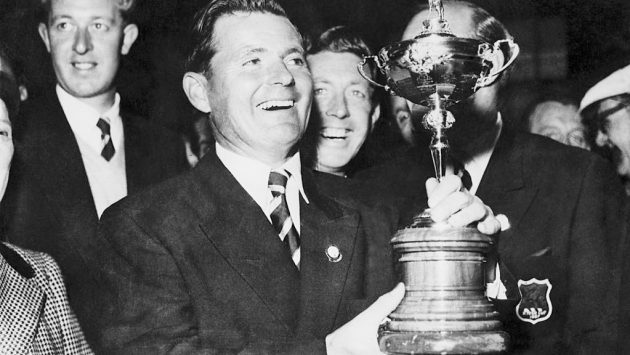Who Sets Up The Ryder Cup Course?
Should who sets up the Ryder Cup course be changed to take power away from captains?


Has the way the courses are set up drained some of the joy and excitement from recent Ryder Cup contests?
Who Sets Up The Ryder Cup Course?
At Valhalla in 2008 Paul Azinger captained the American Ryder Cup side to what, in recent times, has been a rare victory. Much was made of his pod system, whereby he subdivided his 12-man team into three pods of four players, in effect three teams within the team. This was seen as a key component of his winning strategy.
Less was made of how he had worked with the course superintendent to get the course favouring the Americans. He even had two tree branches lopped off to help JB Holmes.
Azinger knew that the majority of his team could fly the ball over 300 yards. His side drove the ball further than the Europeans. So he asked for the tee positions to be such that any fairway bunkers for the drive came at 300 yards. This sand would therefore trouble the Europeans more than his own side.
Moreover, short of these bunkers he wanted the rough long; beyond it, light-to-non-existent. So the majority of the Europeans would have to contend with bunkers and thick rough off the tee; most of his team would face neither obstacle.
What Azinger did was not new. The home side always sets up the Ryder Cup course.
Subscribe to the Golf Monthly newsletter to stay up to date with all the latest tour news, equipment news, reviews, head-to-heads and buyer’s guides from our team of experienced experts.
Rough times ahead
For the 1957 Ryder Cup at Lindrick in Yorkshire, captain Dai Rees ensured that the fairways and greens were hardened through not being watered. He wanted the fairways tight and the rough long. There was to be rough behind the greens two inches deep.
He knew his team would be better at playing out of this greenside rough than the visitors. He also knew the hard fairways and greens would send the Americans shots rolling into this rough more often than those of the home side.
Related: Should The Ryder Cup Return To A Links Course?

Dai Rees’ team won a 7½–4½ and took the cup from American hands for the first time since 1933.
But have home captains just got too proficient at setting up the course to favour their side that some of the joy and excitement is being drained from the contests?
At Hazeltine in 2016 the course set was such that, frankly, too much of the golf was dull. The set up provided birdies not challenges. The Americans thought that way they would win. They were right. They did. Comfortably.
But Justin Rose echoed many armchair fans' views when he queried whether this was the right way to go. “I thought the setup was incredibly weak. It was very much a pro-am in terms of pin placements: they were all in the middle of the green. I didn’t understand that, to be honest, with world-class players. We wanted to showcase our skills.”
Related: Whistling Straits Course Guide

Too predictable?
For much of its history, the Ryder Cup lay unloved and ignored by the wider sporting world. It was just too predictable. You knew who the winner would be – America.
That 1957 triumph – for which Rees was voted BBC Sports Personality of The Year – was not only the first time GB and Ireland had won since 1933, it was also the last time they won. The next time America was vanquished it was 1985 and it was Europe who they lost to.
If the Ryder Cup is again to become predictable, albeit in a different way – the home side nearly always victorious – it will not just be the away side that is the loser. Golf will be.
So it had been suggested that the Ryder Cup should be played at a neutral venue. A simpler way to diminish home advantage would be to make it so that is no longer the home side that sets up the Ryder Cup course. Give this role instead to a neutral overseer.
This year’s away captain, Padraig Harrington see this as the way things may go: “The golf courses are set up to be most advantageous for the home team. It's obviously not going to happen probably in my lifetime, but 40, 50 years down the road, it will probably be best to have a neutral set up to the golf course.”
For more Ryder Cup content check out the Golf Monthly website.
Contributing Writer Roderick is the author of the critically acclaimed comic golf novel, Summer At Tangents. Golf courses and travel are Roderick’s particular interests. He writes travel articles and general features for the magazine, travel supplement and website. He also compiles the magazine's crossword. He is a member of Trevose Golf & Country Club and has played golf in around two dozen countries. Cricket is his other main sporting love. He is also the author of five non-fiction books, four of which are still in print: The Novel Life of PG Wodehouse; The Don: Beyond Boundaries; Wally Hammond: Gentleman & Player and England’s Greatest Post-War All Rounder.
